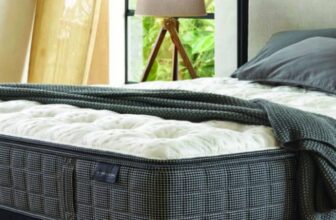
How to Optimize Indoor Air Quality For Superior Home Comfort
Creating a comfortable living space goes beyond just plush furniture and stylish decor. It hinges on an often overlooked factor: the air quality we breathe indoors. Poor indoor air quality can lead to a range of health issues, from allergies to respiratory problems. In this comprehensive guide, we’ll delve into the various strategies to optimize indoor air quality, ensuring a healthier and more comfortable home environment for you and your loved ones.
Choosing the Right Air Conditioner
One of the fundamental aspects of ensuring superior indoor air quality is selecting the right air conditioner for your home. Modern air conditioning systems come equipped with advanced features that not only cool the air but also contribute to purifying it. Opt for air conditioners with high-efficiency particulate air (HEPA) filters. These filters can trap microscopic particles like dust, pollen, and pet dander, preventing them from circulating in your home. Additionally, consider air purifiers that integrate seamlessly with your HVAC system, providing an extra layer of filtration for improved air quality. It’s important to find a reputable brand and then go through their air conditioner guide in order to choose the best one for your needs. Usually, they can also perform a consultation to find out about your home’s cooling requirements.
Ventilation Strategies For Fresh Air
Proper ventilation is crucial for maintaining optimal indoor air quality. While air conditioners play a role in regulating temperature, they may not necessarily bring in fresh outdoor air. Opening windows and doors when weather permits is a simple yet effective way to promote air exchange. If you live in an area with high outdoor pollution levels, consider using ventilation systems equipped with filters that can screen out pollutants while introducing fresh air. Mechanical ventilation, such as exhaust fans and air exchange systems, can be strategically placed to enhance air circulation, preventing the stagnation of indoor pollutants.
Humidity Control For a Healthy Environment
Controlling humidity levels is another key factor in optimizing indoor air quality. High humidity can foster the growth of mold and dust mites, contributing to respiratory issues and allergies. Invest in dehumidifiers to maintain humidity levels between 30-50%, creating an inhospitable environment for these potential allergens. Conversely, in dry climates, consider using humidifiers to prevent the air from becoming too dry, which can irritate the respiratory system and skin. Balancing humidity not only improves comfort but also helps in creating a healthier living space.
The Role of Indoor Plants in Air Purification
Harnessing the power of nature, indoor plants can be valuable allies in the quest for superior air quality. Certain plants, such as snake plants, spider plants, and peace lilies, have natural air-purifying properties. They can absorb pollutants like benzene, formaldehyde, and trichloroethylene, enhancing the overall air quality in your home. Strategically placing these plants in different rooms can contribute to a healthier and more refreshing atmosphere. However, it’s essential to choose plants that are suitable for indoor environments and to maintain them properly to ensure their effectiveness.

Avoiding Harmful Chemicals in Household Products
The products we use in our homes, from cleaning supplies to furniture polish, can release harmful chemicals into the air. Volatile organic compounds (VOCs) are common culprits found in many household items. Opt for products labeled as “low VOC” or “VOC-free” to minimize indoor air pollution. Consider natural alternatives for cleaning, such as vinegar and baking soda, which are not only effective but also environmentally friendly. When purchasing furniture or home decor, choose items made from low-emission materials. Being mindful of the products you bring into your home can significantly contribute to maintaining superior indoor air quality.
Regular Maintenance of HVAC Systems
Even the most advanced HVAC systems require regular maintenance to function optimally. Neglecting routine tasks like changing air filters, cleaning ducts, and servicing the system can lead to a buildup of dust and contaminants. Set a schedule for HVAC maintenance, and be proactive in addressing any issues promptly. A well-maintained system not only ensures efficient cooling and heating but also prevents the circulation of pollutants throughout your home. Regular inspections by professionals can identify potential problems before they escalate, contributing to a healthier indoor environment.
Investing in Air Quality Monitors for Real-Time Assessment
In the pursuit of superior indoor air quality, staying informed is key. Investing in air quality monitors allows you to assess the composition of the air in real-time. These monitors can detect various pollutants, including particulate matter, volatile organic compounds (VOCs), and carbon dioxide. By understanding the specific pollutants present in your indoor environment, you can take targeted actions to address and mitigate them. Some advanced monitors even connect to smart home systems, providing alerts and recommendations for optimizing air quality based on real-time data. Integrating air quality monitors into your home provides a proactive approach to ensuring a consistently healthy atmosphere.

Utilizing UV-C Light Technology For Air Purification
In recent years, ultraviolet (UV) light technology, specifically UV-C light, has gained popularity for its effectiveness in air purification. UV-C light has germicidal properties that can neutralize bacteria, viruses, and mold spores. Integrating UV-C light into your HVAC system or using standalone air purifiers with UV-C technology can enhance the overall air purification process. It acts as a complementary measure to traditional filters, targeting microorganisms that may escape filtration. While UV-C light can be a powerful tool in improving indoor air quality, it’s crucial to use it judiciously and follow safety guidelines to prevent any potential harm.
In the ever-evolving quest for superior indoor air quality, the addition of air quality monitors and the incorporation of UV-C light technology provide advanced solutions to complement traditional strategies. Monitoring air quality in real-time empowers homeowners with the knowledge to make informed decisions, while UV-C light acts as a potent weapon against harmful microorganisms. By combining these innovations with established practices such as selecting the right air conditioner, maintaining HVAC systems, and incorporating air-purifying plants, you can create a comprehensive approach to ensure the air you breathe at home is of the highest quality. Ultimately, the investment in these technologies not only contributes to superior comfort but also supports the well-being and health of those within the sanctuary of your home.



















































































